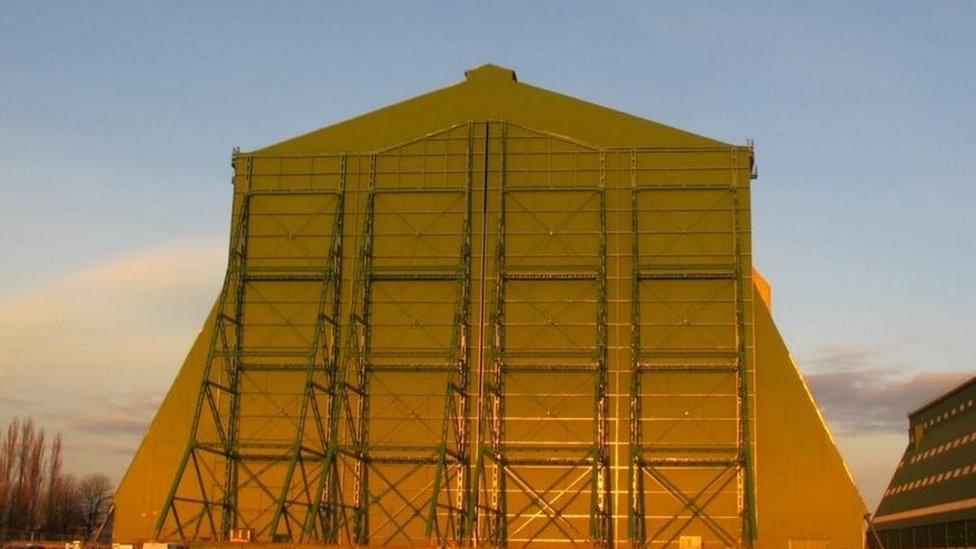Airlander 10 crash-landed after mooring line snagged power cables
- Published
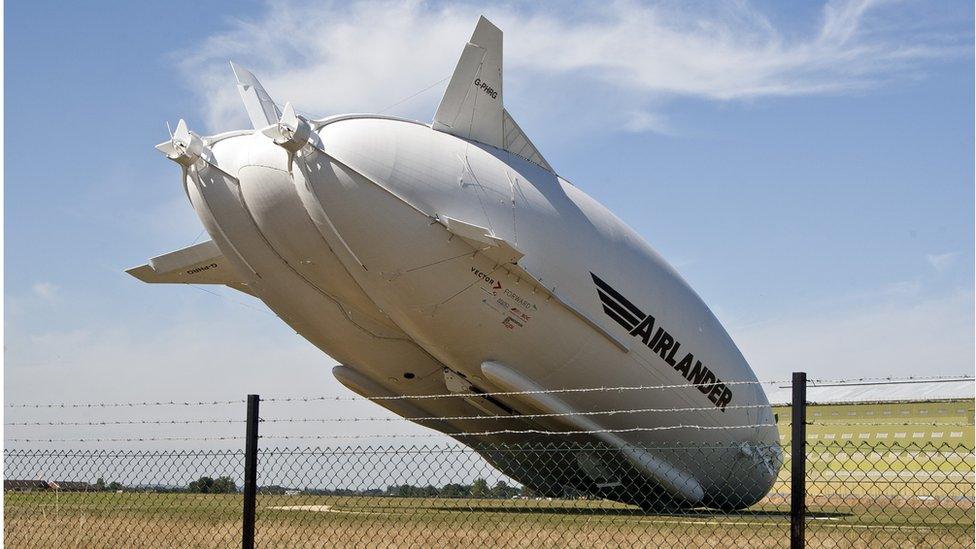
The front of Airlander 10 hit the ground on its return to Cardington Airfield
The world's longest aircraft - the £25m Airlander 10 - crash-landed after climbing to an excessive height because its mooring line became caught on power cables, a report has found.
The 302ft (92m) long aircraft, which is part plane and part airship, nosedived after a test flight at Cardington Airfield in Bedfordshire on 24 August.
The Air Accidents Investigation Branch said the line was hanging free after a first landing attempt had failed.
No-one was injured in the accident.
At the time of the incident, Airlander's developer, Hybrid Air Vehicles (HAV), said the craft had "experienced a heavy landing and the front of the flight deck sustained some damage".
The crew, however, were "safe and well".
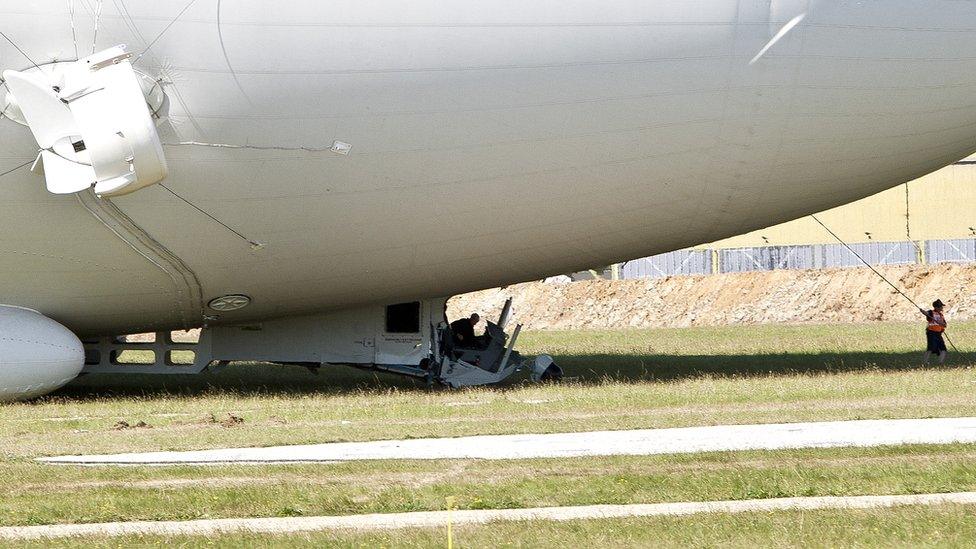
The £25m aircraft's cockpit was effectively destroyed when it crash-landed
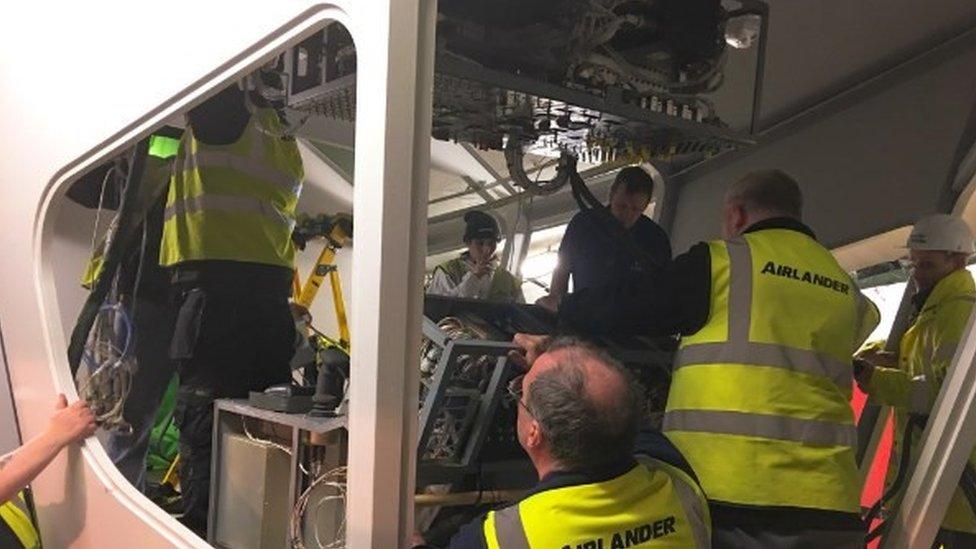
Engineers reinstalled the flight controls after the incident
The AAIB report into the incident stated that ground crew had told Airlander's pilot the mooring line was about 50ft (15m) long, but it was in fact 155ft (47m).
The rope became entangled in power lines near the airfield as the pilot attempted a second landing.
"The encounter contributed to a high final approach", investigators said.
The craft was about 180ft (55m) over the landing site and was "reluctant to descend naturally".
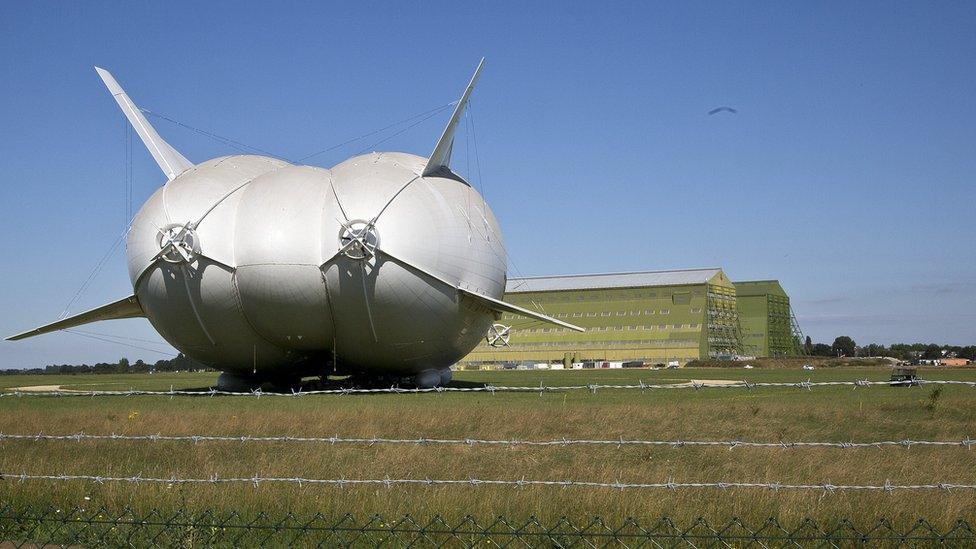
The aircraft was developed and built in the country's biggest hangar in Bedfordshire
The pilot attempted to manoeuvre the aircraft to a nose-down position to bring its mooring line within reach of the ground crew but it "suddenly pitched further down to about 18 degrees and started to descend," the report stated.
"There was insufficient height in which to affect a full recovery and the aircraft struck the ground."
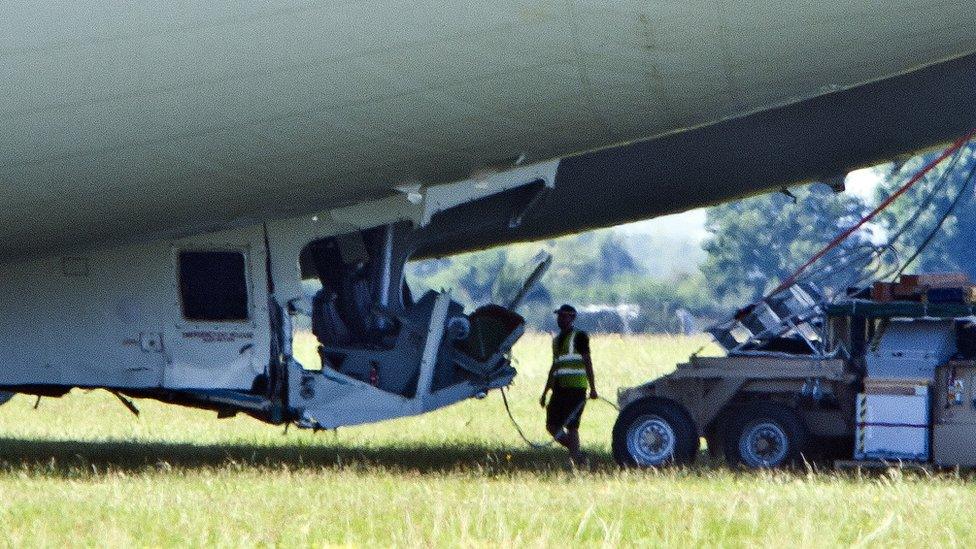
The pilots walked away from the "heavy landing" unscathed
Repairs were carried out on the cockpit and earlier this week HAV said these were complete and Airlander was undergoing "an extensive test phase prior to its next flight".
A new landing system, which will allow it to return to ground from a greater range of angles, and a redesign to allow easier recovery of the mooring line, are among changes that have been made since the crash, the company said.
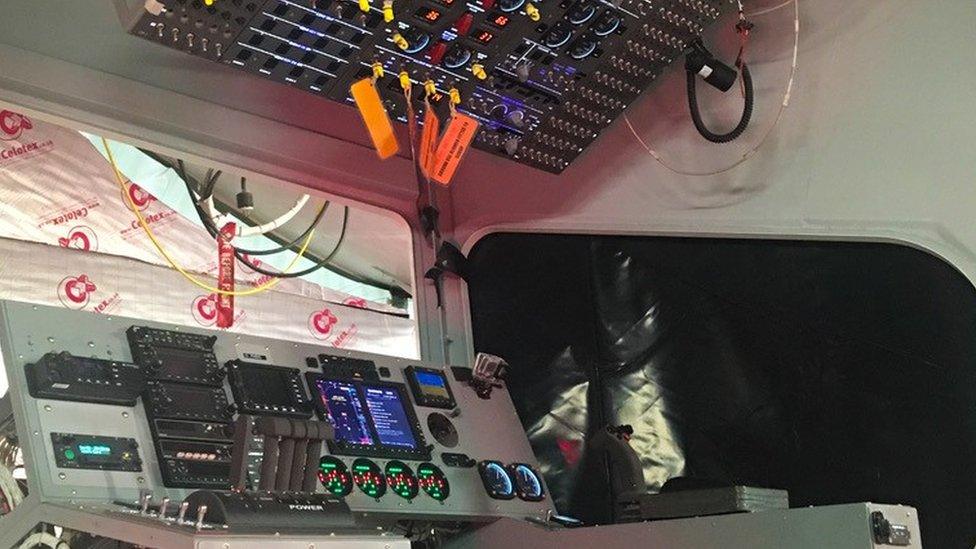
The cockpit was badly damaged in the crash

Airlander 10 in numbers
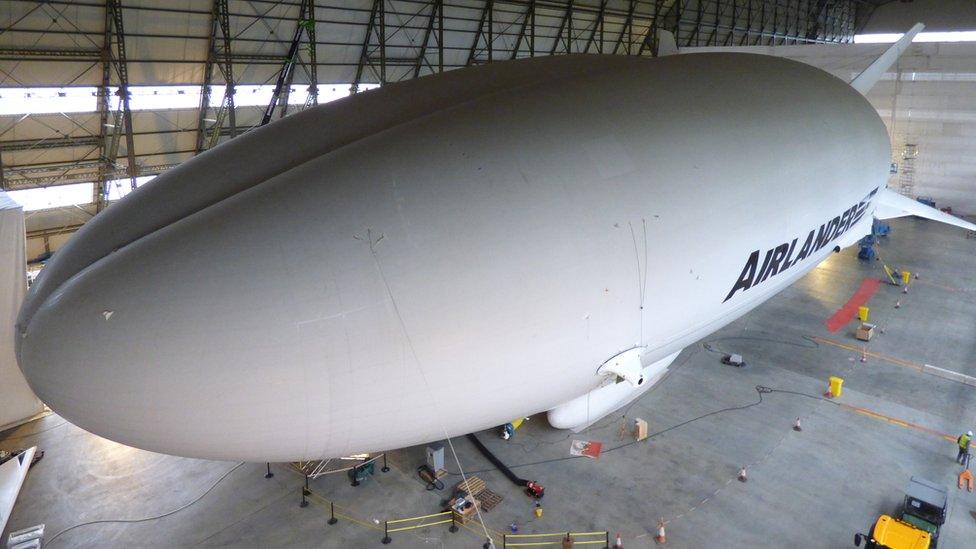
The airship can even fly with bullet holes in it
44,100 lbs (20,000kg): The weight of the airship
20,000ft (6,100m): The altitude it can reach
80 knots (148km/h): Maximum speed
5 days: How long it can stay airborne during manned flights
22,050 lbs (10,000kg): Total payload - the weight the ship is able to carry

- Published4 February 2017

- Published24 August 2016

- Published17 August 2016

- Published15 August 2016
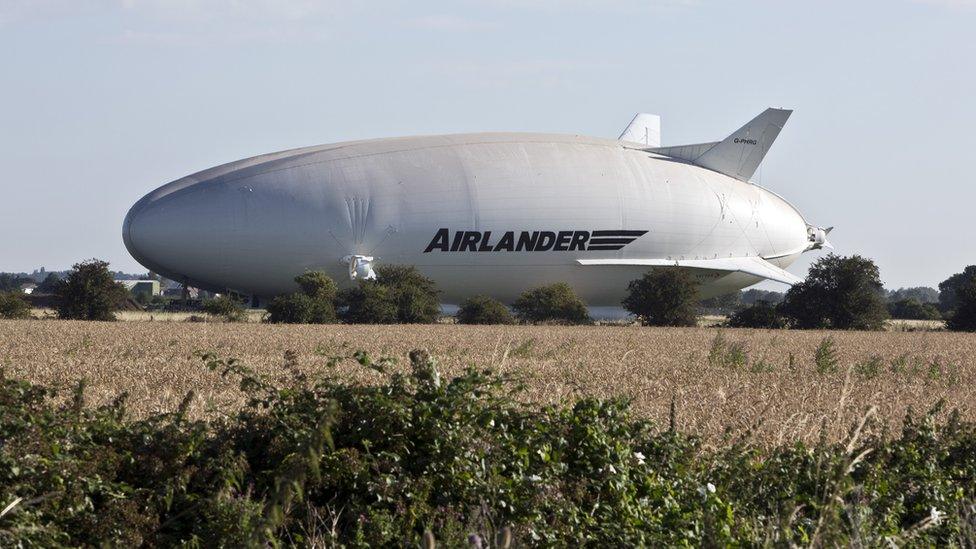
- Published15 August 2016
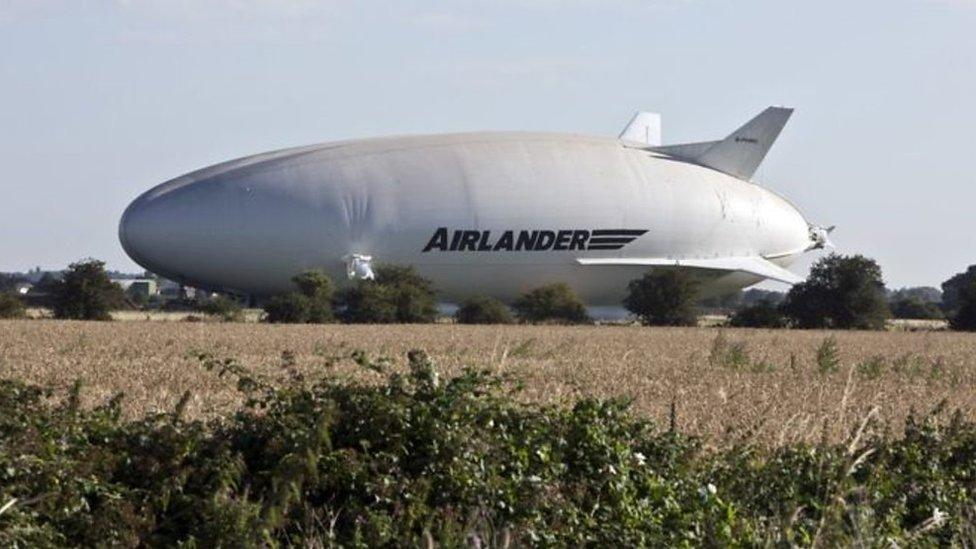
- Published19 March 2016

- Published5 March 2016
